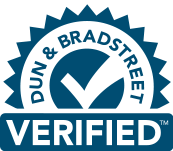If you have a website, you know the importance of search engine optimization (SEO). Search engines need to understand the content that users are consuming on your site. There are dozens of small changes that can be made to any given page in order to optimize it to earn the best placement in the search engine results. Video is no exception. Follow these tips to ensure Google understands your website videos.
Did you know that including a video in a blog post increases organic traffic from search results by 157%? This has led many businesses to place more importance on the production and publication of online videos, and just like anything else on your website, the videos that you release must be optimized for search engines as well.
There are a few simple steps that you can take when publishing and creating a video to ensure that it is indexed and performs well for your chosen search keywords. If you aren’t careful, search engines may not be able to understand the content of the video or not even recognize that you have a video on the page at all.
Here are some simple SEO tips for video that will help you to drive valuable traffic toward your latest video.
Video Titles and Keywords
Although you might not be publishing a video specifically for the purpose of ranking in search engines, it is always a welcome side effect.
The best place to start when optimizing your video for search engines is knowing what keywords you will be targeting. Even if your video wasn’t specifically made to target search keywords, choosing related keywords and ensuring that they are present in the title of the video helps to show Google and other search engines that the video is relevant for the given keyword. Try to include a keyword in the title of your video where applicable.
This can be set within the meta tags when embedding the video on your site.
In-Depth Description
Whether you are uploading and hosting the video on your own website, on YouTube, or on some other video platform, it is important that you include a description for the video. The description is valuable not just for user experience, but for search engine optimization as well.
Describe the contents of the video accurately in your description, while sprinkling your chosen keywords logically throughout. What will your audience learn from the video? Who is this video intended for? Why should your audience be interested in the video? Answering these questions should give you a good start on creating a valuable video description.
Include Tags
If you are using YouTube as your 3rd-party video player, you can assign “tags” to your video. Essentially, these are keywords that help YouTube better categorize your video and determine what topics your video is relevant to.
Including tags will help searchers find your video through the YouTube search, but also has broader SEO implications through the Google search engine as well.
Share your Video
One of the factors that Google takes into account when ranking websites in their search engine is social relevance. When a video has been shared by hundreds of people, that generally means that a large number of people found the video interesting, useful, or relevant to their interests.
In order to facilitate these social signals, you should share your video with anyone and everyone who might find it interesting. Sharing your video on social networking websites, forums, and with your email list is an excellent start for fostering social signals that will help your video perform well in search engines.
Create Transcriptions to Improve Indexing
Most videos are created from a pre-written script. Unfortunately, after publishing the video, many companies don’t bother to include a transcription of the contents of the video.
Transcriptions are not difficult to obtain through online services. Including transcriptions for your video improves the experience of your users. If a prospective customer was deaf, had no sound, or was unable to play sound because they were in a public setting but still wanted to understand the contents of the video, a transcription is incredibly useful.
Additionally, the extra content and additional keyword inclusion will help Google determine what keywords that video is relevant for. This is one of the easiest ways to allow search engines to understand the contents of the video.
Create a Video Sitemap
You may be familiar with a website sitemap, which is a listing of all of the pages on your website, ensuring that search engines are able to find and crawl all of your pages. A video sitemap is the same thing, except for video!
When you are self-hosting videos or using a 3rd-party player (other than YouTube), you want to make sure that search engines are able to find, index and understand them, and a video sitemap is an excellent way to make sure this happens swiftly.
If you are using a 3rd-party to host your videos, many will provide a video sitemap that you can use. If not, here is information on how to build a Video Sitemap.
Use Embed not iFrame
Search engines ignore content within an iframe on a webpage. Video is no exception. Most 3rd-party video hosting services provide options for embedding the video content on a webpage.
You will want to use the embed or oembed option. This will allow search engines to recognize and understand the content on the page. It will also allow you to track user behavior through the likes of Google Analytics.
Creating high quality videos have helped many businesses improve their monthly revenue and create a close, personal connection with their users. Video SEO allows your videos to be found by those that are not already familiar with your brand, and can drive large amounts of traffic to your website. By following these simple tips, you can help Google accurately rank your video for relevant keywords.
If you would like to build your video marketing program today, please contact us to schedule your initial consultation.
Author:






